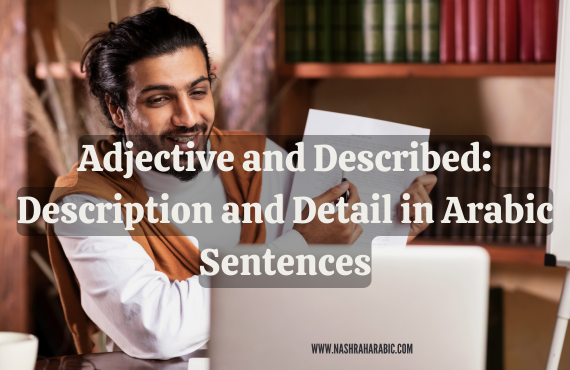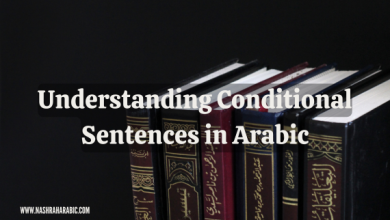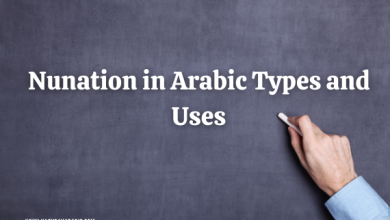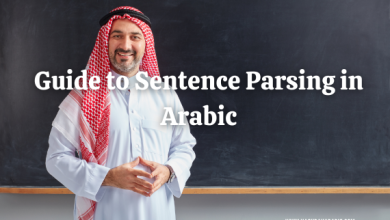In Arabic, the relationship between adjectives and the nouns they describe, often referred to as the “adjective and described” (naʿt wa manʿūt), plays a crucial role in crafting clear and precise sentences. Whether you’re a language learner or simply curious about Arabic grammar, understanding how adjectives and nouns interact can greatly enhance your ability to form coherent and detailed sentences.
Introduction to Adjective and Described
Adjectives and described nouns form a fundamental part of Arabic sentence structure. They work together to provide detailed information about the nouns in question, allowing speakers and writers to convey precise meanings.
What is an Adjective in Arabic?
An adjective, known as “naʿt” in Arabic, is a word that describes or modifies a noun. It gives more information about the noun’s qualities, such as color, size, or condition. For example, in the phrase “الرجل الطيب” (al-rajul al-ṭayyib), meaning “the good man,” “الطيب” (al-ṭayyib) is the adjective describing the noun “الرجل” (al-rajul).
Understanding the Described Noun
The noun that an adjective describes is called the “manʿūt.” In Arabic, the relationship between the naʿt and manʿūt is tightly knit, with the adjective closely following the noun it describes. This pairing is essential for ensuring the sentence conveys the intended meaning.
How Adjectives Agree with Nouns
In Arabic, adjectives must agree with the nouns they describe in terms of gender, number, definiteness, and case. This agreement is crucial for maintaining the grammatical structure and clarity of the sentence.
Definiteness and Indefiniteness
Adjectives in Arabic must match the definiteness or indefiniteness of the noun they describe. If the noun is definite (marked by “ال”), the adjective must also be definite. For example, “الكتاب الكبير” (al-kitāb al-kabīr) means “the big book,” where both the noun and adjective are definite.
Gender Agreement
Adjectives must match the gender of the noun they describe. Arabic nouns are either masculine or feminine, and the adjective must reflect this. For instance, “الولد الصغير” (al-walad al-ṣaghīr) means “the small boy,” with both the noun and adjective in masculine form, while “البنت الصغيرة” (al-bint al-ṣaghīra) means “the small girl,” with both in feminine form.
Number Agreement
Adjectives also agree with the number of the noun they describe, whether singular, dual, or plural. This aspect of agreement helps in providing precise descriptions. For example, “الطالبان المجتهدان” (al-ṭālibān al-mujtahidān) means “the diligent students” (dual), where the adjective matches the dual form of the noun.
Position of the Adjective in a Sentence
Unlike English, where adjectives typically precede the noun, in Arabic, adjectives generally follow the noun they describe. This structure is integral to the language’s syntax and ensures the sentence flows correctly.
Common Mistakes to Avoid
One common mistake learners make is forgetting to match the adjective’s definiteness, gender, or number with the noun. Such errors can lead to misunderstandings or awkward sentences. Ensuring agreement is key to mastering adjective and described pairs.
Examples of Adjective and Described
Let’s explore a few examples to solidify the concept:
- البيت الجميل (al-bayt al-jamīl) – “The beautiful house.”
- المدرسة الكبيرة (al-madrasah al-kabīrah) – “The big school.”
- الكلب السريع (al-kalb al-sarīʿ) – “The fast dog.”
Adjective and Described in Complex Sentences
In more complex sentences, multiple adjectives can describe a single noun, or adjectives can describe nouns within clauses. Understanding how to navigate these structures is essential for advanced Arabic learners.
The Role of Adjectives in Arabic Poetry
Adjectives play a significant role in Arabic poetry, adding depth and emotion to verses. Poets use adjectives to paint vivid images and evoke feelings, making them a powerful tool in the art of Arabic literature.
Practical Tips for Mastering Adjectives
Practice is key to mastering adjectives in Arabic. Start with simple sentences and gradually move to more complex structures. Pay attention to agreement and the nuances that different adjectives can bring to a sentence.
The Impact of Adjectives on Sentence Meaning
The choice of adjective can dramatically change the meaning of a sentence. For example, “الولد الذكي” (al-walad al-dhakī) means “the smart boy,” while “الولد الغبي” (al-walad al-ghabī) means “the foolish boy.” The adjective chosen gives the noun its distinct characteristic.
Conclusion and Final Thoughts
Understanding the relationship between adjectives and described nouns in Arabic is fundamental for effective communication. By mastering this aspect of Arabic grammar, you’ll be able to create detailed, nuanced sentences that convey your thoughts with clarity and precision.
FAQs
What is the role of adjectives in Arabic sentences?
Adjectives describe or modify nouns, providing additional information about their qualities, such as size, color, or condition.
How do adjectives agree with nouns in Arabic?
Adjectives must agree with the nouns they describe in gender, number, definiteness, and case.
Can an adjective describe more than one noun in Arabic?
Yes, an adjective can describe multiple nouns, especially in complex sentences. It must agree with each noun in gender, number, and definiteness.
What is a common mistake when using adjectives in Arabic?
A common mistake is failing to match the adjective’s definiteness, gender, or number with the noun, leading to grammatical errors.
How are adjectives used in Arabic poetry?
In Arabic poetry, adjectives are used to add depth and emotion, creating vivid imagery and enhancing the overall expression.
By understanding and mastering the use of adjectives and described nouns in Arabic, you can significantly improve your ability to communicate in this rich and expressive language. Whether you’re writing a simple sentence or crafting a poetic verse, the principles of naʿt wa manʿūt will guide you in creating clear and meaningful expressions.
Don’t forget to subscribe to our Youtube channel.




